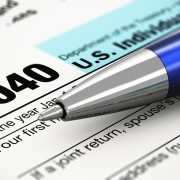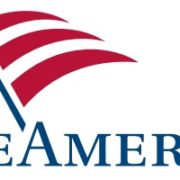The SECURE Act 2.0 Brings Big Changes to Retirement Accounts – Part 1 – 02/01/23
Money Matters – Skloff Financial Group Question of the Month – February 1, 2023
By Aaron Skloff, AIF, CFA, MBA
Q: We read the articles ‘The SECURE Act Brings the Biggest Changes to IRAs Since Their Inception’ Part 1, Part 2, and Part 3. We have large retirement accounts, so we are concerned about paying unnecessary taxes. How can we optimize our taxes and our beneficiaries’ taxes?
A: The Problem — The SECURE Act 2.0 Changes Estate Planning, Financial Planning and Tax Planning
The SECURE (Setting Every Community Up for Retirement Enhancement) Act 2.0 became effective on January 1, 2023. It secures and enhances the government’s coffers, as it complicates your estate planning, financial planning and tax planning. Let’s review the key components of the SECURE ACT 2.0 below.
Click Here for Your Life Insurance Quotes
The Solution – Understanding Key Components of the SECURE Act 2.0
1. Increasing the Required Minimum Distribution (RMD) Age. While the SECURE Act increased the RMD age to 72, SECURE Act 2.0 increased the RMD age to 73 and to 75 in 2033. Those that are already subject to RMDs, including those subject to inherited IRA RMDs, are not affected by this change.
2. Reducing Skipped RMD Penalty. Beginning in 2023, the penalty for skipped RMDs is reduced from 50% to 25% of the RMD amount. The penalty is reduced to 10% if the account owner completes the skipped RMD and submits a corrected tax return to the IRS in a timely manner.
3. Eliminating RMDs on Roth Accounts in Employer Sponsored Retirement Plans. Beginning in 2024, RMDs will longer be required on Roth accounts in 401(k), 403(b) and 457(b) plans. This includes participants that were or are subject to Roth RMDs.
4. Increasing Catch-up Contribution Limits on Employer Sponsored Retirement Plans. Beginning in 2025, employer sponsored retirement plan (e.g.: 401(k)s and 403(b)s) participants aged 60, 61, 62 and 63 can make catch-up contributions of up to $10,000 annually (indexed for inflation) or 150% of the catch-up contribution amount for 2024.
5. Eliminating Pre-Tax Catch-up Contributions on Employer Sponsored Retirement Plans. Beginning in 2024, catch-up contributions to 401(k), 403(b) and 457(b) plans by participants with wages more than $145,000 in the prior calendar year (adjusted for inflation in future years) must be made on a Roth basis, with after-tax dollars. Participants with wages less than or equal to $145,000 in the prior calendar year can be made on a pre-tax basis. Technically, self-employed individuals (partners and sole proprietors) are not subject to the Roth catch-up contribution requirement.
6. Matching and Non-elective Contributions on a Roth Basis on Employer Sponsored Retirement Plans. Beginning in 2023, employers can offer participants the option to elect some or all of their vested matching and non-elective contributions to be treated as Roth contributions under a 401(k), 403(b) or 457(b) plan.
Action Steps — Work Closely with a Registered Investment Adviser (RIA) to Review Your Employer Sponsored Retirement Plan and Your Induvial Retirement Account
The SECURE Act 2.0 introduces many new requirements, and many options employers can offer. It also brings many new choices participants should evaluate, yet not necessarily utilize. Work closely with an RIA to review your plan and individual account to optimize your estate, retirement, tax and financial planning strategies. Implement the solutions described above based on your unique circumstances.
Aaron Skloff, Accredited Investment Fiduciary (AIF), Chartered Financial Analyst (CFA), Master of Business Administration (MBA) is CEO of Skloff Financial Group, a Registered Investment Advisory firm. He can be contacted at www.skloff.com or 908-464-3060.












